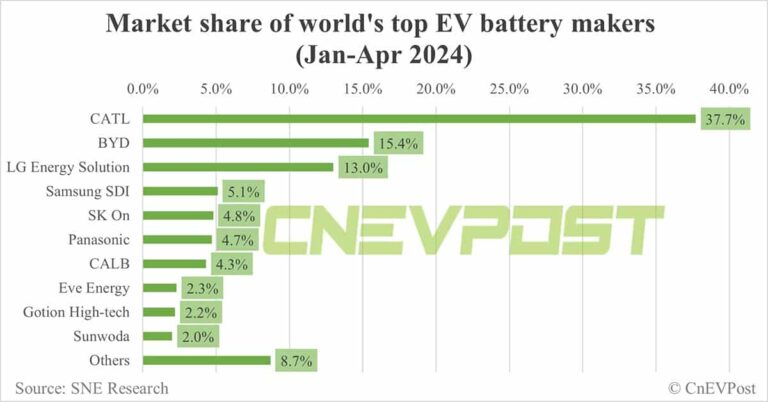CATL plans to launch a second-generation Qilin Battery with a 6C charging multiplier in the second half of 2024, and BYD's second-generation Blade Battery could also be launched in the second half of the year, with a 6C battery in the works.

As some Chinese electric vehicles (EVs) are just beginning to carry batteries that support 5C charging, the two local battery giants are reportedly competing to develop the next generation of batteries with event faster charging.
Contemporary Amperex Technology Co Ltd (CATL, SHE: 300750) plans to launch power batteries with a charging multiplier of 6C in the second half of 2024, the second generation of its Qilin Battery, local media outlet 36kr said in a June 12 report.
Meantime, BYD (HKG: 1211, OTCMKTS: BYDDY), which hasn't released new batteries in three years, is also mulling the launch of batteries that supports faster charging speeds.
BYD's second-generation Blade Battery will likely launch in the second half of 2024, and the company's 6C battery is also in the works, 36kr said, citing a source close to BYD.
C refers to the battery's charging multiplier, and 6C means that the battery could theoretically be fully charged in one-sixth of an hour, or 10 minutes.
In reality, battery makers often use the peak charging multiplier to market their products, even though that charging power can be sustained for a very short period of time.
Li Auto's (NASDAQ: LI) Li Mega MPV (multi-purpose vehicle), which was launched on March 1, is powered by Qilin Battery from CATL, which supports 5C charging and can get a 500-kilometer range on a 12-minute charge.
Zeekr's (NYSE: ZK) 2024 Zeekr 001, launched on February 27, is powered by Shenxing Battery from CATL and also supports 5C charging.
The new Zeekr 001 can be charged from 10 percent to 80 percent in just 11.5 minutes and has an increased range of 472 kilometers, Zeekr said at the model's launch.
Companies including Li Auto and Zeekr have already had technical exchanges with CATL on the second generation Qilin Battery, but have not yet decided whether to launch products with the technology this year, according to the report by 36kr.
Improvements in cell chemistry and the design of the pack's heat dissipation system are key to achieving faster charging speeds and ensuring safety.
At the heart of CATL's Qilin Battery is water-cooling technology used on a large scale, and BYD's R&D capabilities in battery system cooling are showing up, 36kr's report noted.
When BYD unveiled its fifth-generation DM (dual mode) hybrid system not long ago, the new-generation plug-in hybrid electric vehicle (PHEV) Blade Battery used in the system have been significantly improved in terms of the cooling system, the report said.
None of BYD's models yet support fast charging at multiples above 4C, but the company's technology reserves are already sufficient, 36kr said, adding that BYD's style is to be ready for production by the time it announces new technology.
Notably, EV charging speeds are also affected by charging facilities.
Currently the Chinese EV industry usually refers to charging piles with a power of 120 kW or more as supercharging piles, but in order to reach a 4C or 5C charging multiplier, the charging power has to be 360 kW or more, 36kr's report noted.
The maximum charging power of a 4C supercharging pile is 480 kW, and the maximum charging current is 615 A. The number of such charging piles is very small, and charging piles that can support a 5C multiplier are even rarer, the report said.
This also means that even if a user buys a model that supports 4C and 5C charging multiples, it's currently difficult to get the best experience, the report noted.

